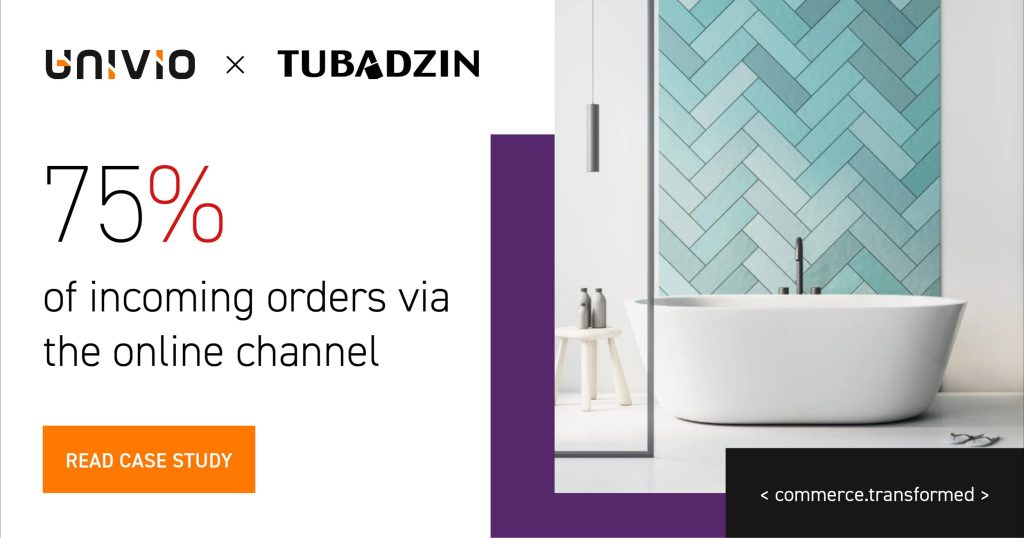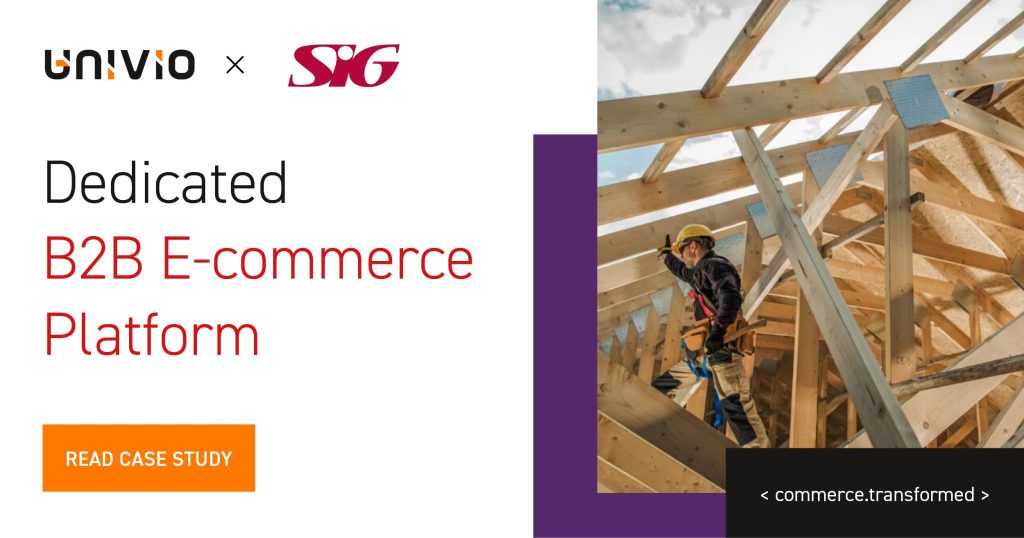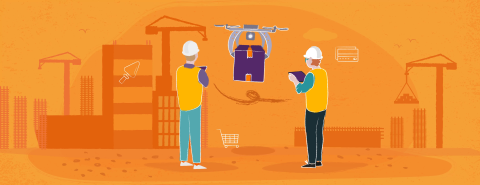Selling in B2B / Lessons Learned From B2C
E-commerce is booming: that’s no secret. What is worth highlighting, however is the sudden B2B e-commerce growth that’s often lost in the wider story. An industry that typically relied on in-person sales is now relying on digital sales more than ever.
While they may be ‘behind’ compared to B2C, this is also means B2B online sales can learn from the former’s successes (and mistakes). So, let’s explore the key factors that can – and should! – influence your B2B e-commerce model.
What is the difference between B2B and B2C sales?
Needless to say, you can’t just “copy and paste” the B2C approach into your B2B e-commerce business model. There is more than one difference between B2B and B2C in e-commerce, just as there is in real-life.
B2B vs B2C buying process
There is arguably a big difference between B2B and B2C buyer behaviour, borne out of one fundamental divergence:
- B2C are often buying a mix of what they need and want. It’s a personal choice.
- B2B are typically purchasing a ‘need’ in the company. Moreover, those doing the purchasing often have to justify their decisions to others.*
*if you’re selling directly to the CEO then we envy you and you probably don’t need our help!
Information, Information, Information
A shopper can pick up a product to learn more about it. Likewise, a B2B buyer often asks questions directly. They want to be sure they’re making the right purchase (vs company-defined needs) and this is one of the easiest B2B e-commerce challenges to solve.
- Display as much information as possible. Product Information Management is essential. Whether it’s weight, height, material or even scalable costing for bulk goods, clear information goes a long way to worry-free, informed purchasing.
- Be reachable for questions. Whether by phone, email or even on-site chat support, the ability to ask questions (and get a prompt answer) should never be ignored. You can’t always predict every customer question or concern.
- Master complexity. Many B2B products are complicated by their very nature. They have numerous attributes and aspects that can be changed. Calculators and other tools should be implemented to guide customers in both understanding their needs or seeing how such choices impact the final results – both in cost and delivery time.
Time & Convenience
Based on the “fundamentally obvious truth” mentioned earlier, we can extrapolate one more thing: B2B buyers don’t have all the time in the world. They’re not browsing for leisure. As such, wasted time and clicks will simply cause them to disappear.

There is something of an “elevator pitch” when it comes to the B2B e-commerce model. The customer needs to find exactly what they need via simple navigation, product filtering and more. You can’t simply copy your raw catalogue online.
- Have all the supplemental information available. How much delivery costs, how soon can it be delivered etc.
- If you have multiple products of a similar type, direct comparisons will be essential for enabling the customer to quickly – and independently – make a choice.
Negotiations and Adjustable Pricing
Clients in the B2B world seldom expect a fixed price – at least not for expensive items (cheap ‘bulk goods’ often make up for this with wholesale or bulk discount incentives). On the other hand, negotiating in Walmart doesn’t get you very far.
So how does this work online? When prices are fluid, a simple “click & buy” doesn’t work. In the B2B sales model, customers still need to negotiate the old-fashioned way: offline, or at least person-to-person. What we need to solve, then, is after this conversation: how can we move this back online?
One way to solve this is with custom web-portals. Here, after prices have been agreed and a contract is entered, the client’s internal portal reflects their unique prices and options (of course, they sign an agreement before entering). Every detail is agreed personally – it’s an exclusive contract – and this should form an important part of your customer messaging.
Once they’re in the account, we can further support them:
- Specialized calculators to determine prices for loyal customers, bulk discounts and more – whatever may be agreed in the contract.
- Videos, case studies and other direct marketing material that will help the customer in regards to their specific needs.
Orders & Payments
After all that, the customer still needs to actually pay. While the B2C world is fine with receipts, the B2B sector requires much more:
- VAT invoicing is always a necessity.
- Splitting the order. Often, the customer needs some things now, and some things later. Don’t make them go through the process multiple times.
- Split payments. This is especially true if the order is split. Only B2C markets demand full payment up-front: in B2B, trust is a secondary currency. This is especially vital when only certain items are in stock, as both payments and invoices need to be connected to product availability.
B2B vs B2C customer service
Ongoing loyalty isn’t defined by pricing alone. Especially in the B2B sector, companies are looking for providers that are reliable, dependable and worthy of the investment. This also goes for the individual making such decisions: they want to feel as if they’re choosing someone who has their back.
Nothing defines this more than customer service. If questions are answered, if prices are adapted and – yes, it happens – things that go wrong are fixed quickly, people will come back. Without these things, those purchasing specialists may feel a personal risk; a feeling that your service will support the company until it doesn’t, in which case they’re the ones in trouble.
But.. How are B2B and B2C Similar?
Paradoxically, B2B engages people more and makes them fully devoted customers who know the offer, the platform and the merchandise. For them, the B2B platform is very often one of their indispensable tools for daily work (apart from other mainstays, like the ERP and CRM). They refresh it regularly to check stock prices, inventory, delivery times etc. Based on the data they read, they estimate various things in their projects. They are also constantly tracking news and preordering goods.
This means, if anything, the values drawn from B2C potentially matter more when dealing with B2B:
Loyalty
Collecting points for every purchase is nothing new, but in the B2B market it’s just as vital. In many ways, loyalty is your actual business. B2B customers seek long term trust and support. They also spend a lot of money and should be rewarded for this. Whether it’s occasional discounts after a certain period, or even considering it as part of preorder payments over initial periods (buying for the year vs buying for the month) these partner programs, as they’re more commonly called in B2B, are still about the same thing: positive reinforcement.
Customization
Giving users options in all areas is essential. Today’s consumer wants to choose the delivery date, payment method and more. In B2B, we must also consider other factors, such as payment dates, as customers have their own trade limit and expense policies to deal with. Customization enables your business to adapt to the customer’s business, which greatly reinforces loyalty.
Information
Nobody makes a blind purchase in B2B. Everyone knows exactly what they want and they seek corresponding information to confirm your business is a viable answer. Stock information is essential. If a user needs 10,000 pieces, you need to show that you have it available now. And if it’s made to order, also make it clear how the timeframe is impacted by larger order volumes.

Experience
In e-commerce, slow loading times lead to high abandonment. When asking an individual to utilize your platform on a regular basis, one frustration too much can lead to losing important accounts. Yet this also extends into customer support and all other areas – when your clients have problems, a 2-week ticket response isn’t acceptable.
Key Points for Your B2B E-commerce Strategy
So what does all this mean for your B2B online sales? While there’s a big difference between B2B e-commerce and B2C e-commerce, we can nonetheless learn from this and extrapolate a number of key imperatives:
- Enable users to be independent. Product information, delivery options etc should all be available upfront.
- Be there for the other parts. Price negotiations and answering questions can’t be fully automated (yet) – plus the human touch in this section goes a long, long way.
- Make it painless. B2B buyers often need to pay after, not before, and often require invoices and other paperwork not found in the B2C. Don’t just port this over, automate and optimize what is probably the most painful part of your customer’s job for them.
- Get the business logic right on your side. The right backend technology can manage multiple accounts for different individuals, yet still see the larger business as a whole (for discounts etc). Business logic is a lot like magic, the best parts happen behind the scenes.







